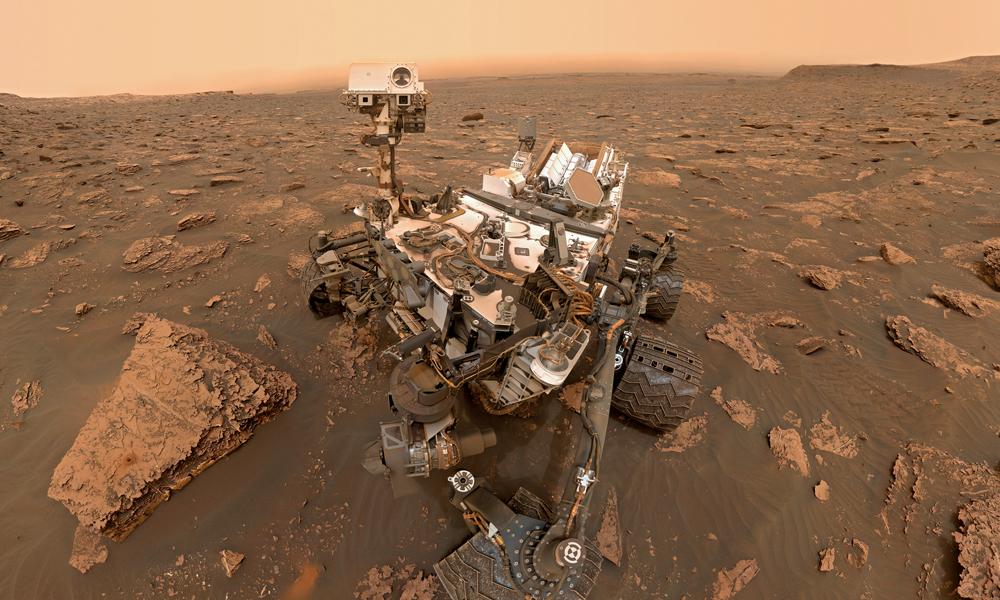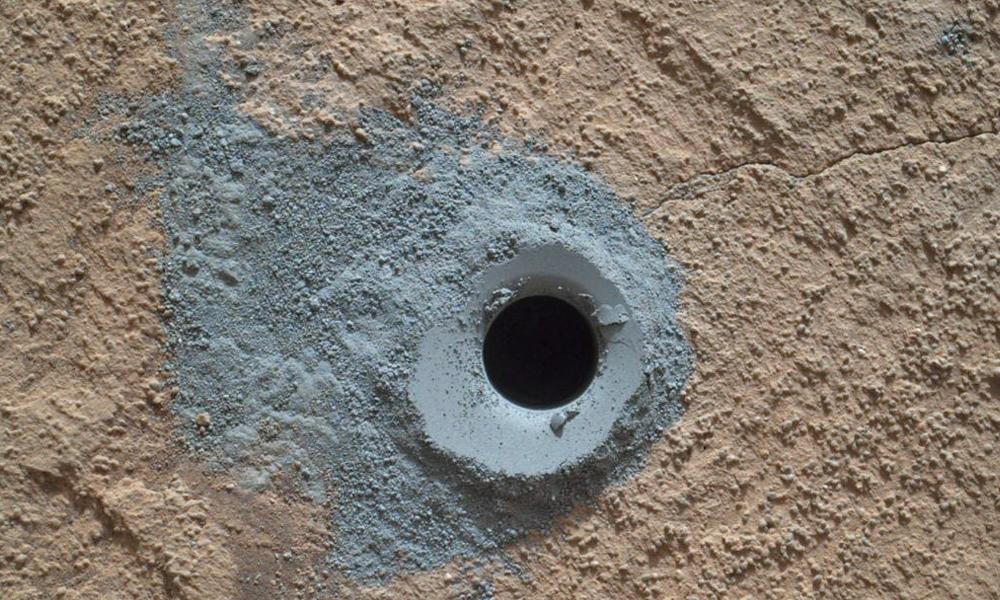Exploring the planet
NASA’s Jennifer Eigenbrode (’94) seeks organic materials to unlock Mars’ secrets
Science and Technology
SUMMARY: Jennifer Eigenbrode ('94), a planetary science astrobiologist at the Goddard Space Flight Center, is a member of NASA's Sample Analysis at Mars team for the Mars Science Laboratory mission.
from the Winter 2019 issue of Madison
The lure of one day traveling to Mars, Earth’s closest neighbor, has captured the imagination of billionaire entrepreneurs, at least one former U.S. astronaut and untold numbers of forward-looking individuals.
But before any of their plans launch from the drawing board, they would do well to heed the research going on today by hundreds of NASA scientists, including JMU alumna Jennifer Eigenbrode (’94), about the planet’s composition and atmosphere. A planetary science astrobiologist based at the Goddard Space Flight Center in Greenbelt, Maryland, Eigenbrode joined NASA in 2007 as a member of the Sample Analysis at Mars team for the Mars Science Laboratory mission.
|
'I am at NASA because I want to know if life has existed or exists now beyond Earth. It's not an easy one to answer. I don't even know if we're going to get an answer in my lifetime. — Jennifer Eigenbrode ('94) |
“SAM is an instrumental laboratory in the belly of the rover,” Eigenbrode says of the devices housed within Curiosity, a car-sized rover with a big mission: to determine if Mars was ever able to support microbial life. Since landing in 2012, Curiosity’s robotic arm has gathered rock and dust from the Martian landscape, delivered the samples to the instruments and heated them to produce gases. “One of my jobs is to study the data that is transmitted from that instrument so we can analyze their composition,” Eigenbrode says. “I want to know if there are organics in the rock samples.”
In June, Eigenbrode’s team published exciting news in Science. After engaging in rigorous analysis and reanalysis, scientists announced they had found organic molecules preserved in 3-billion-year-old sedimentary rocks at the base of Mount Sharp on Mars. “Finding organics doesn’t tell us there was life there,” Eigenbrode cautions, “but it’s an important clue to where we should look for evidence of life, in this case, a past life.”
 |
| Jennifer Eigenbrode and another NASA scientist drill into the ice in the Kverkjokull Glacier in Iceland to retrieve samples for analysis. |
NASA scientists on Earth receive information at least twice a day from the rover via satellite transmissions. The information is distributed to the scientists, depending on their expertise. “We are constantly reviewing data,” Eigenbrode says. “It never stops.”
Transmissions flow in reverse to tell Curiosity where to go and what samples to gather. “It’s a unique experience to do field geology and laboratory chemistry through a rover that is millions of miles away.”
While the Science paper reported on a key mission finding, Eigenbrode, who earned a Bachelor of Science degree in geology at JMU, points to several other mission highlights as favorite moments of discovery. Early in the mission, the team discovered a conglomerate rock, one filled with small and large rounded pebbles. “That told us that those individual pebbles had to have been bounced along a stream channel by a fluid for a very long time in order to get rounded off,” Eigenbrode says. “So there is a process there that we identify as being one associated with river flow. We didn’t know that when we landed.”
It gets even better. Multiple layers of soft, fine-grain materials were discovered. “It was laid down in these really, really thin layers,” Eigenbrode explains “The quiet water of lakes is good at depositing layers like these. The river flowed into a lake!”
From these findings, the team deduced that there was an environment on Mars billions of years ago—3 to 3.5 billion years—that could have supported life. “That doesn’t mean that life was there,” she cautions. “It means that if life had been there, everything that life needed to survive was there.”
 |
| Eigenbrode in Chilé’s Atacama Desert. The rocks there share many features with those seen by the rover on Mars. |
Another moment of discovery involved the planet’s color. “Mars glows red in the sky. We have always observed it as a rusty red planet. But when we drilled 5 centimeters into our first rock, dark gray sediment came out of the hole. The planet’s not red; it’s gray, covered in red dust.”
 |
| Evidence of Mars’ true color, gray, as drilled by Curiosity. |
All of these findings convince Eigenbrode and her fellow scientists that they have scratched the surface of a rich research base, especially if humans are one day to travel to Mars. The Curiosity mission has revealed several obstacles that must be addressed for astronaut safety, such as the presence of perchlorates, compounds toxic to humans at the levels found on Mars. Dust storms could also prove disastrous to humans and equipment. “It’s so fine, it gets everywhere and it sticks,” Eigenbrode says. Then there’s the radiation coming down and the wide temperature swings. “It gets really cold there,” she says, “and anywhere between 60 to 80 degrees Celsius temperature swings occur on a daily basis.”
These obstacles will need solutions, Eigenbrode believes, because “humans on the ground might be our best means of studying Mars.”
Until that day, Eigenbrode is excited to be part of the Curiosity mission. “I am a geologist on the surface of Mars; I’m just not physically there. All the fundamental geology that I learned at James Madison, I apply on a regular basis on the Mars mission. But geology is only one discipline of the science necessary to address the bigger questions that we seek to answer.”
 |
| Eigenbrode testing water quality and helping fellow scientist Dina Bower of the University of Maryland collect rock samples for analysis. |
Eigenbrode, who earned a master’s degree in geological sciences at Indiana University, a doctoral degree in geosciences at Pennsylvania State University and was a postdoctoral fellow in the Geophysical Laboratory at Carnegie Institution of Washington, D.C., brings her experience to the mix of interdisciplinary scientists with expertise in geology, chemistry, biology, physics and atmospheric science, who all come together to answer questions posed by the “Red Planet.”
“I am at NASA because I want to know if life has existed or exists now beyond Earth,” Eigenbrode says. “It’s not an easy one to answer. I don’t even know if we’re going to get an answer in my lifetime.”
But for now, she says, “There’s no experience on Earth that compares to working on another planet.”
 |
| The foreground of this scene from the Mastcam on NASA's Curiosity Mars rover shows purple-hued rocks near the rover's late-2016 location on lower Mount Sharp. The scene's middle distance includes higher layers that are future destinations for the mission. Variations in color of the rocks hint at the diversity of their composition. |

